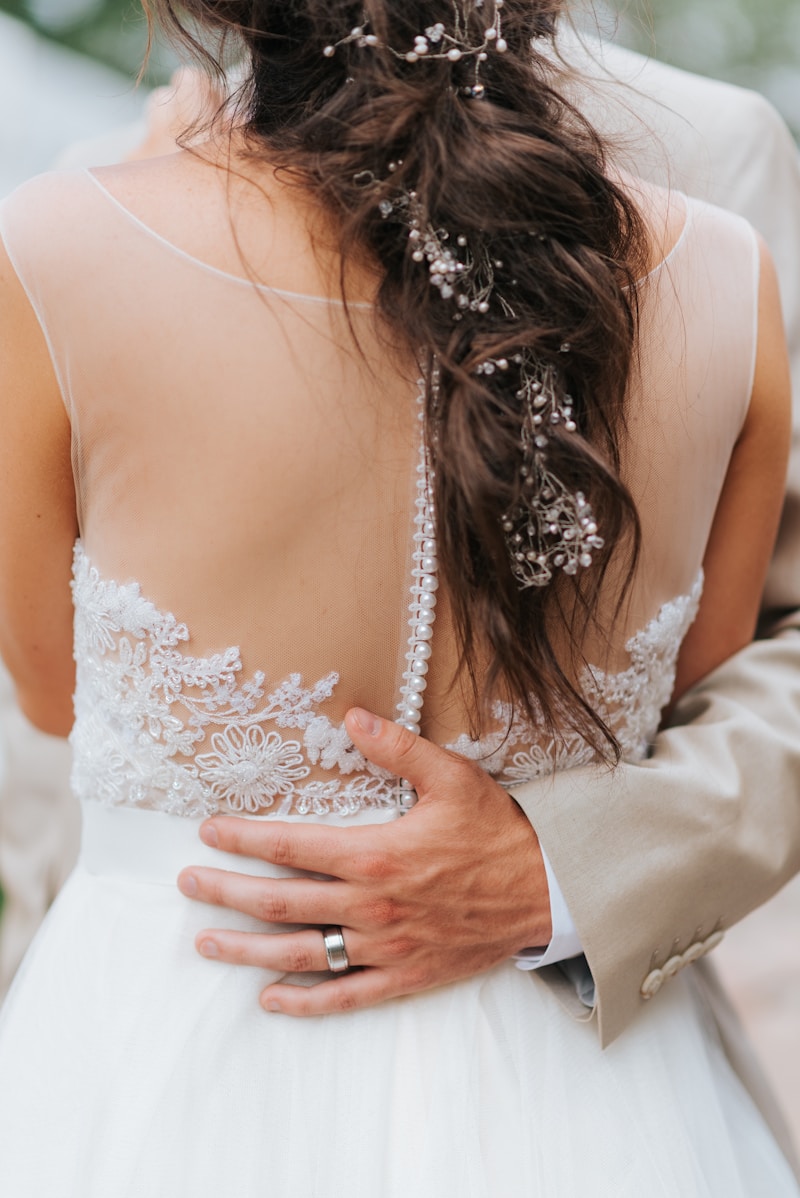Materials Used in Fingertip Veils: A Detailed Look
Introduction
Fingertip veils are increasingly popular among brides looking to add a touch of elegance and sophistication to their wedding attire. Selecting the right materials for these veils can deeply affect the overall look, feel, and quality. In this article, we will do an in-depth analysis of the various materials used in fingertip veils, focusing on their characteristics, advantages, and how they affect the final presentation of this essential bridal accessory.
Understanding Fingertip Veils
Before diving into materials, it’s vital to understand what fingertip veils are. Typically, fingertip veils reach the bride’s fingertips, offering a balance between coverage and elegance. These veils often complement a range of wedding gowns, enhancing the overall aesthetic without overwhelming the bridal look.
The Importance of Material Choice
The choice of material is a critical aspect of fingertip veil crafting. Different materials can bring various textures, drapes, and levels of opacity, impacting how the veil interacts with the wedding dress. It is essential to consider the style of the gown, the wedding venue, and personal preference when selecting materials.
Common Materials Used in Fingertip Veils
| Material | Characteristics | Advantages | Best Suited For |
| Chantilly Lace | Delicate and ornate with floral patterns. | Adds a vintage and romantic touch. | Classic and traditional weddings. |
| Tulle | Lightweight and sheer with a slightly stiff structure. | Gives a soft and ethereal appearance. | Modern and whimsical themes. |
| Organza | Firm with a slight sheen, offering more structure. | Provides volume and dramatic effect. | Glamorous and upscale weddings. |
| Birdcage Netting | Shorter, with a tighter weave. | Creates a retro and stylish appearance. | Vintage-inspired wedding looks. |
Diving Deeper into Each Material
Chantilly Lace
Chantilly lace is a luxurious option for brides seeking a classic look. Known for its intricate designs featuring floral and geometric patterns, this fabric often adds a sense of elegance that is hard to replicate. The primary advantage of using Chantilly lace is its romantic aesthetic, making it a favored choice for traditional wedding ceremonies.
Tulle
Tulle is a popular fabric for network crafting, ideal for those desiring a light and airy feel. Widely used in bridal veils, tulle comes in many shades but remains popular in classic ivory or white. Its structure can vary, providing options for different levels of stiffness. Tulle is perfect for brides wanting a whimsical or fairytale-like quality.
Organza
Organza is known for its crispness and lightweight nature, contributing to a dramatic effect when layered. It is also durable, resisting wrinkles and maintaining its shape well. Brides who choose organza can expect a veil with beautiful volume that enhances the overall silhouette.
Birdcage Netting
For those looking for a vintage flair, birdcage netting offers a unique and chic option. This material is generally shorter, creating a defined style that frames the face beautifully. Birdcage veils often have an edgy, eccentric vibe, suitable for modern brides drawn to vintage aesthetics.
Additional Considerations When Choosing Materials
When selecting materials for fingertip veils, it’s also essential to consider the following:
- Comfort: Ensure the material feels comfortable against the skin, as it will be worn for an extended period.
- Weather Conditions: Consider the season and venue, as some materials may not hold up well in humidity or rain.
- Color Matching: Ensure that the veil complements your gown's color; many gowns have subtle hues.
- Maintenance: Some materials require specific care instructions; understanding this can save time and ensure the veil remains pristine on your big day.
The Impact of Accessories on Your Fingertip Veil
Accessories can also influence the overall appearance of a fingertip veil. Combs, clips, and decorative pins can enhance the veil's beauty while offering extra stability. It is prudent to test these accessories during fittings to see how they work with your chosen materials.
Frequently Asked Questions
What is the average cost of fingertips veils made from different materials?
The cost of fingertip veils varies widely based on material choice. Basic tulle veils can start as low as $30, while lace and intricately designed organza pieces can range from $100 to $300 or more. Custom designs may elevate the price, so it’s wise to set a budget before shopping.
How to maintain the quality of fingertip veils?
Maintaining fingertip veils is essential for keeping them looking pristine. Always follow the care instructions specific to the material, which typically involves gentle cleaning methods and proper storage away from direct sunlight. Hanging veils can help maintain their shape, but ensure the hanger is padded to prevent creases.
Conclusion
In conclusion, understanding the materials used in fingertip veils is critical for every bride. Whether you choose the romantic allure of Chantilly lace, the ethereal touch of tulle, the dramatic flair of organza, or the chic vibe of birdcage netting, the right fabric can significantly enhance your wedding look. Consider your gown, wedding theme, and personal comfort when selecting your veil material. Also, ensure you maintain the veil appropriately leading up to and on your big day. With the right choice, your fingertip veil can become a memorable element of your bridal attire, creating beautiful moments that will last a lifetime.
